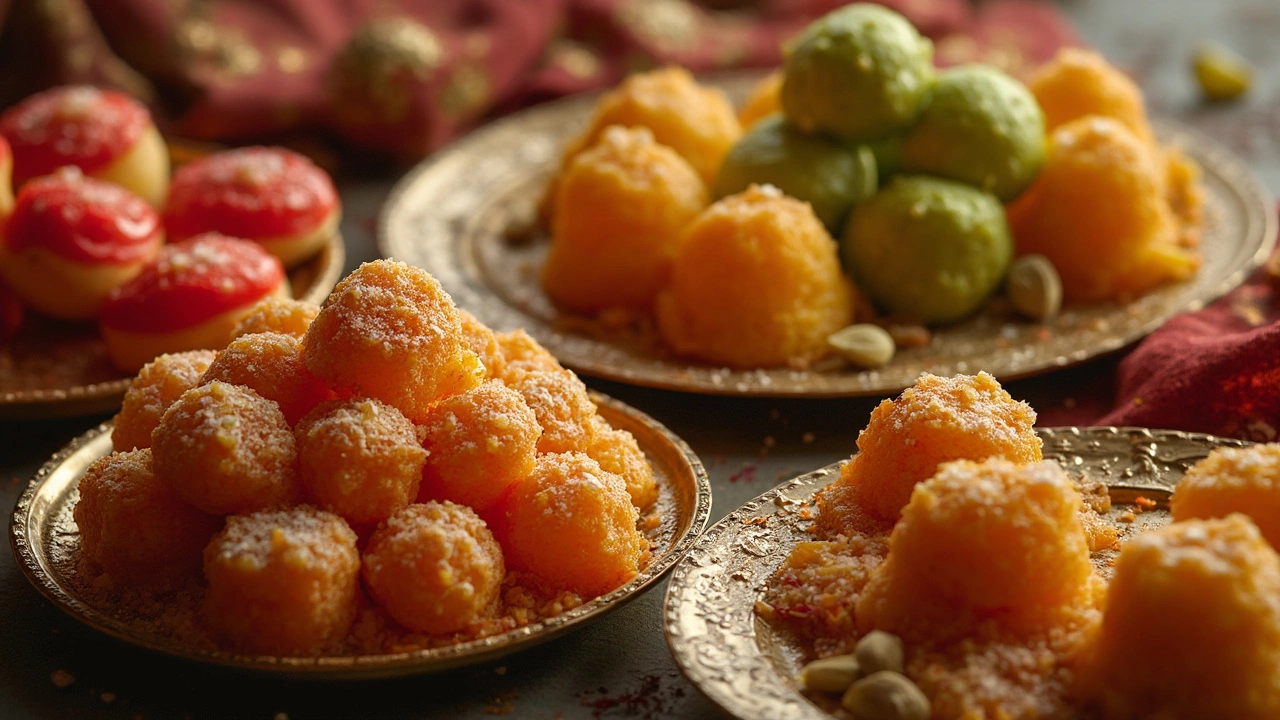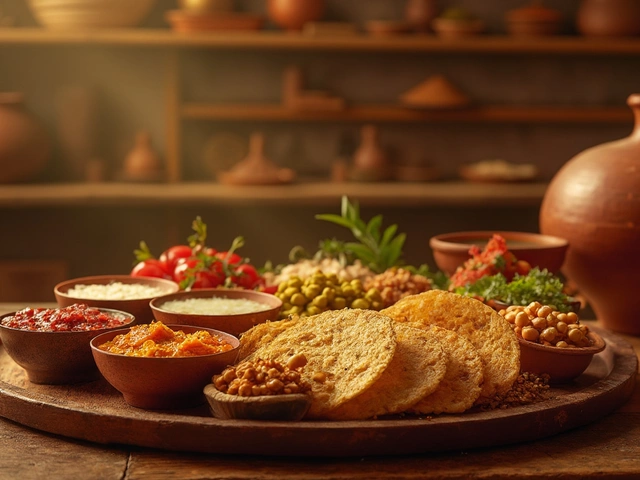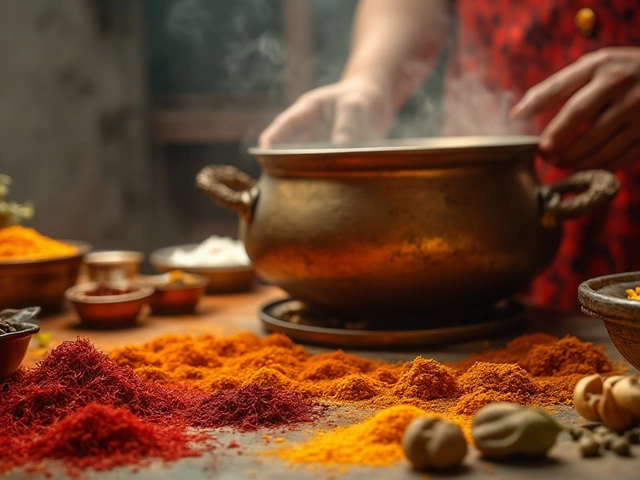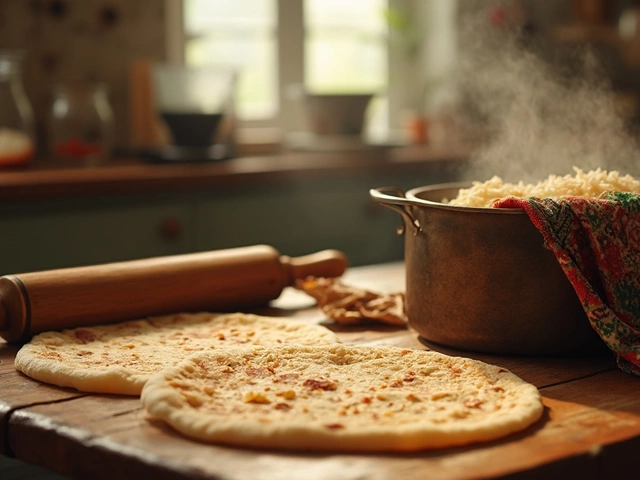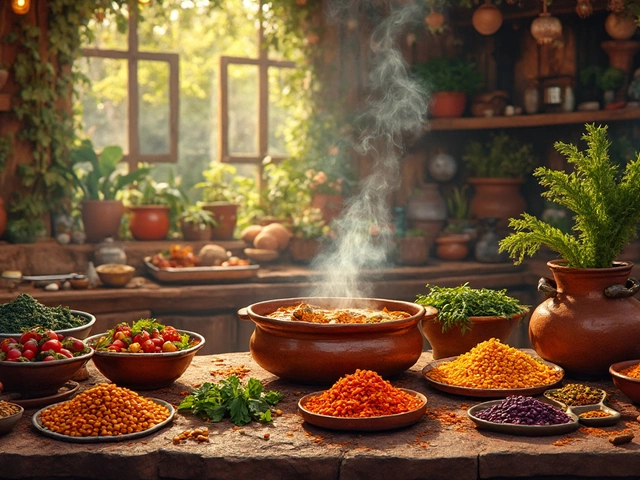Bite into an Indian dessert and there’s a sweet, fragrant taste that’s unlike anything else. That flavor? It’s usually cardamom — the little green pod that packs a punch. Cardamom shows up everywhere in Indian sweets, from gulab jamun and kheer to ladoos and barfi. It’s what gives these treats their cozy, floral kick.
Most people don’t realize how vital cardamom is until they try making an Indian dessert without it. Suddenly, the magic’s just gone. Want to make your sweets taste legit? Start with cardamom. A pinch of ground powder or bruised seeds can make a huge difference. For beginners, whole pods are easy to find at most grocery stores. Just split them, pull out the black seeds, and crush them a little for max flavor.
- Spotlight on Cardamom: The MVP of Sweet Spices
- How Cardamom Transforms Indian Sweets
- Other Sweet Spices Playing Backup
- Buying, Storing, and Using Cardamom at Home
- Classic Indian Sweets You Can Try
- Troubleshooting: Getting the Balance Right
Spotlight on Cardamom: The MVP of Sweet Spices
If there’s one spice that pops up in nearly every Indian sweet, it’s cardamom. Known as “elaichi” in Hindi, cardamom has this cozy, almost citrusy flavor mixed with a gentle floral vibe. It’s the instant ‘oh wow!’ factor in desserts like rice pudding, rasmalai, and milk cakes. While India is the world’s top producer, you’ll also find it in Middle Eastern and Scandinavian recipes, but nowhere does it shine like it does in Indian food.
What makes cardamom so special? Each tiny pod holds about 15-20 little black seeds. They’re loaded with natural oils that carry the bold taste. A quick, fun fact — even a pinch of ground cardamom can totally lift a whole pot of dessert, so a little really goes a long way.
| Feature | Cardamom Details |
|---|---|
| Common Name | Elaichi |
| Main Producer | India (more than 60% of world supply) |
| Flavor Profile | Sweet, citrusy, floral, fresh |
| Best Used In | Indian sweets, chai, rice dishes |
| Typical Form | Whole pods, crushed seeds, ground powder |
Why do Indian cooks prefer cardamom in sweets over other spices? For one, it does the sweet and spicy thing without overpowering your dessert with heat. You get the depth and sweetness, not just a blast of spice. Plus, it blends well with sugar, milk, nuts, and ghee – all staples in Indian treats.
If you haven’t tried making sweets with fresh cardamom before, start with small amounts. Too much, and things can get bitter or overly strong. But nail the balance, and you’ll see why it’s the MVP in almost every festive dessert from India.
How Cardamom Transforms Indian Sweets
Cardamom isn’t just tossed in for a hint of aroma—it’s the backbone of the flavor in most Indian desserts. When you taste a sweet and instantly get that subtle, citrusy warmth, you’re tasting cardamom at work. It doesn’t overpower; it lifts everything else up, especially sweet and milky flavors. In fact, cardamom is so common in Indian sweets that most recipes just call it “elaichi,” assuming everyone knows which spice is meant.
Cardamom pairs beautifully with ingredients like milk, ghee, sugar, and even nuts. Crack open a pod and the seeds drop in that unique flavor, whether the dessert is steamed, baked, or simmered. The trick is balance: too much, and your dish tastes medicinal. Too little, and it’s flat. Most home cooks use about 1/4 teaspoon of freshly ground cardamom to flavor enough dessert for a family.
- In classic kheer (rice pudding), cardamom blends with creamy milk and slow-cooked rice, turning an everyday dish into something special.
- It stops gulab jamun syrup from being one-note sweet, without fighting sugar for attention.
- Barfi—a fudge-like sweet—comes alive with just a pinch stirred into the mix as it cools.
Cardamom also works as a preservative because it keeps sweets fresher for a bit longer. It helps cover up any leftover taste from boiled milk, too. Studies even suggest it can help with digestion after big meals (which is handy during festivals or weddings).
Check out this quick breakdown of where cardamom shows up most often in Indian desserts:
| Dessert | Cardamom Usage | Why It Matters |
|---|---|---|
| Kheer | Ground and added at the end | Brings freshness, balances dairy |
| Gulab Jamun | Crushed in syrup | Cuts sweetness, adds aroma |
| Barfi | Mixed during cooling | Lifts milky taste |
| Ladoo | Powdered, in mixture | Gives warmth, sweet boost |
If you want true Indian sweet shop flavor in your desserts at home, don’t skip the cardamom. Freshly ground always works better than store-bought powder, so try crushing pods with a rolling pin for the best results. Your sweets—and your taste buds—will thank you.
Other Sweet Spices Playing Backup
Sure, cardamom is the headliner in most Indian desserts, but it’s not doing all the heavy lifting alone. There’s a supporting cast of sweet spices working behind the scenes, each bringing its own twist to the flavor party.
Cinnamon is one you can’t miss. Ground cinnamon or little sticks often show up in rice puddings like kheer and in deep-fried treats. It adds warmth and a sweet note without overpowering the main flavors. You’ll sometimes find cinnamon used with cardamom for a nice balance that tastes familiar to anyone who grew up chewing on cinnamon gum.
Cloves are another backup player. People use just a pinch—too much, and the spice can sting your tongue. In sweets, cloves help give richness, especially in syrupy desserts like gulab jamun. Sometimes, a clove is tucked inside the sweet itself to infuse flavor as it sits.
Nutmeg also makes the lineup, but it’s way stronger than it looks. Usually, just a grate or two is enough to round out the flavors in creamy desserts. You’ll notice nutmeg in Indian rice puddings or milk-based sweets, adding complexity without stealing the show.
- Sweet spice blends: Some families use ready-made spice mixes for desserts—that could mean cardamom, cinnamon, nutmeg, and even a bit of dried ginger or fennel all ground together. This makes prepping faster and guarantees balanced flavors every time.
- Experimenting at home? Start small with the backup spices, especially cloves and nutmeg. It’s easy to add more, but impossible to fix if you go overboard.
These spices aren’t just for taste; they can also help preserve sweets for longer and hide any odd smells from heavy dairy or ghee. So, next time you snack on a ladoo or sip on masala chai, try guessing which sweet spices are working behind the curtain.
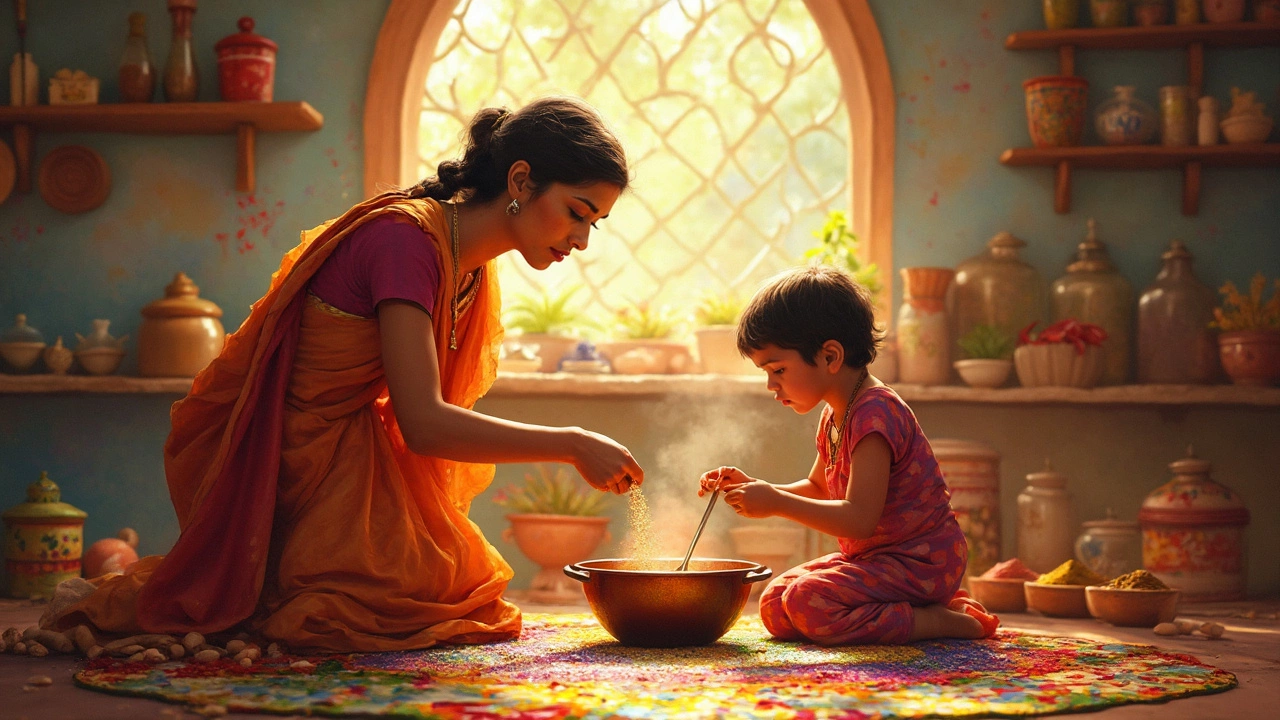
Buying, Storing, and Using Cardamom at Home
Walk into any Indian grocery store and you’ll see whole cardamom pods, ground cardamom powder, and even pre-mixed masala blends. If you only pick one, always go with the whole green pods. They hold their flavor way longer than ground powder. The ground stuff loses its punch fast—sometimes in just a couple of weeks after opening. Whole pods? Those will stay strong for months if you store them right.
Here’s a quick breakdown of what to look for and how to keep cardamom fresh:
- Buy: Check for pods that are plump, bright green, and smell strong. Pale, shriveled ones are old and bland.
- Store: Put pods in an airtight jar away from sunlight and heat. A cool, dark pantry is perfect. Don’t keep them near your stove—they hate humidity.
- Use: When you need cardamom, crack open the pod and pull out the black seeds. Crush them using a mortar and pestle for max flavor. For a lighter touch, toss the whole pod into boiling milk or syrup (just fish it out before serving).
For ground cardamom, store it in a small container and use it within a month. The flavor just doesn’t wait around.
| Form | Pantry (Airtight) | Notes |
|---|---|---|
| Whole pods | 6-12 months | Best flavor, stays fresh longest |
| Seeds (out of pods) | 3-4 months | Flavor drops after a few weeks |
| Ground | 1 month | Loses aroma fastest |
A cool tip: If you want to really boost the aroma in your sweet spice desserts, warm cardamom pods gently on a dry pan for a minute before crushing. That little step makes a big difference in recipes like kheer and payasam. Don’t forget, a little goes a long way—overdoing it can make your sweets taste “soapy.” Stay light-handed until you find your perfect balance.
Classic Indian Sweets You Can Try
If you’re curious about where to start with Indian desserts, here are a few all-time favorites. These sweets are regulars at family gatherings, big celebrations, and street food stalls—each one showing off the signature warmth of cardamom.
- Gulab Jamun: Deep-fried dough balls soaked in rose-cardamom syrup. Super popular at weddings and during Diwali.
- Kheer: Creamy rice pudding spiced with cardamom and sometimes garnished with nuts or saffron. Simple, but super satisfying.
- Ladoo: Round, bite-sized sweets made from flour or lentils, always jazzed up with cardamom for that classic touch.
- Barfi: Fudgy milk-based sweets cut into squares, flavored with cardamom and often topped with silver leaf or nuts.
- Rasgulla: Spongy cheese balls simmered in light syrup with—you guessed it—hints of cardamom.
Feeling ambitious? Most of these sweets are doable at home, even if you don’t have fancy equipment. Here’s how a typical kheer is made:
- Simmer milk and rice until soft and thick.
- Add sugar, cardamom powder, and cook for a few minutes.
- Top with chopped pistachios or almonds if you have them handy.
| Sweet Name | Main Ingredients | Sweet Spice Used |
|---|---|---|
| Gulab Jamun | Milk solids, flour, sugar syrup | Cardamom |
| Kheer | Milk, rice, sugar | Cardamom |
| Ladoo | Flour/lentils, sugar, ghee | Cardamom |
| Barfi | Milk solids, sugar | Cardamom |
| Rasgulla | Cottage cheese, sugar syrup | Cardamom |
No need to hunt for rare ingredients—these dishes use stuff that’s easy to find. Cardamom is what ties them all together, and honestly, your kitchen will smell amazing.
Troubleshooting: Getting the Balance Right
So you’ve got your sweet spice picked out, but something feels off in the flavor? Getting the balance right with cardamom and other spices can be tricky—too little feels bland, too much, and you’ll overpower your dessert. The good news: a little really goes a long way. If your sweets taste too strong or too weak, here’s what you can do.
- If your dessert tastes soapy or bitter: Cardamom is likely the culprit. This sometimes happens if you grind the pods with the husks, or just use too much. Always use just the seeds unless the recipe says otherwise, and measure carefully—start with 1/4 teaspoon ground cardamom per two cups of dessert as a baseline.
- If you can’t taste the cardamom at all: Check if your spice is fresh. Cardamom loses flavor fast when ground. Try crushing seeds right before using, and bump up the amount in 1/8 teaspoon increments. Taste as you go; you can always add more, but you can’t take it out once it’s in.
- If spices don’t blend in: Mixing ground spices into warm liquid (milk or syrup) dissolves them better and spreads flavor evenly. For chunky desserts like rice pudding, always mix well and taste after cooling.
- Nervous about mixing spices? Keep it simple. Use just cardamom until you’re confident. Mixing more than one can muddle flavors if you guess at amounts.
Some home cooks worry about exact ratios. Here’s a simple guideline for the most popular Indian sweets, based on typical family recipes:
| Sweet | Type of Cardamom | Typical Amount per 4 Servings |
|---|---|---|
| Rice Kheer | Ground | 1/2 tsp |
| Gulab Jamun | Ground or Seeds | 1/2 tsp |
| Ladoo | Ground | 1/4 tsp |
| Sandesh | Seeds | 4 pods (crushed) |
Here’s a final tip: whenever you mess up the spice, try serving the sweet with a topping like chopped nuts or dried fruit. It can mask a hint of bitterness or mellow strong flavors a bit. And always write down how much spice you used, so next time you’ll know what worked for your taste buds.
- Poplular Tags
- sweet spice
- Indian sweets
- cardamom
- Indian desserts
- flavor





